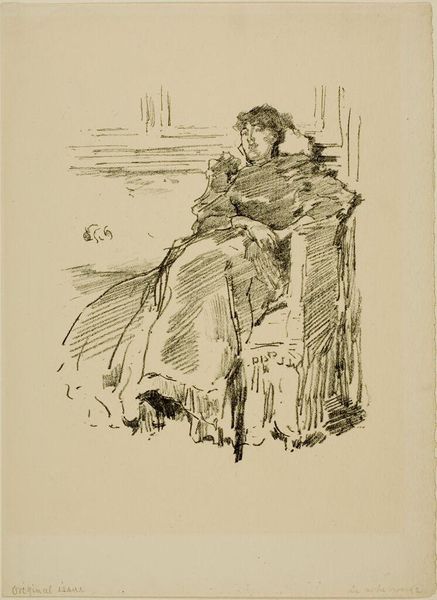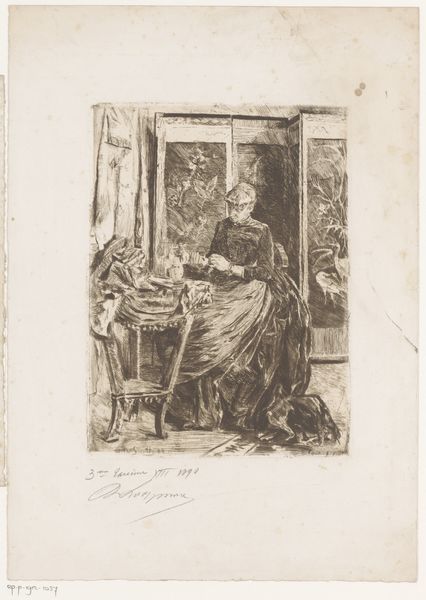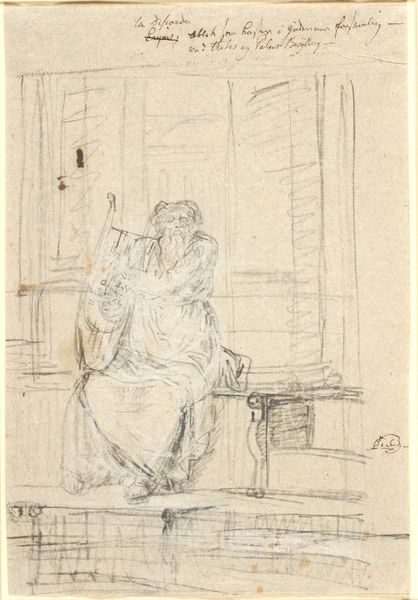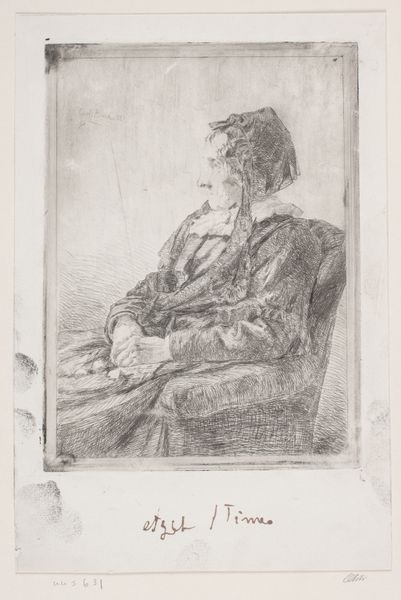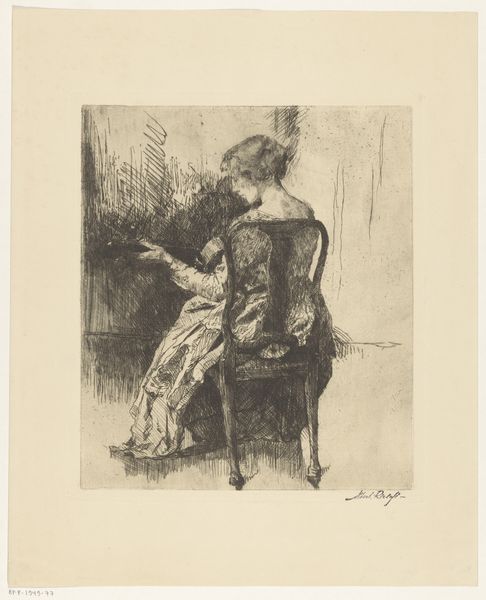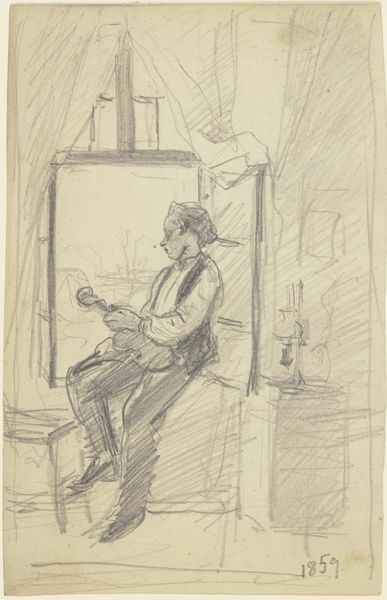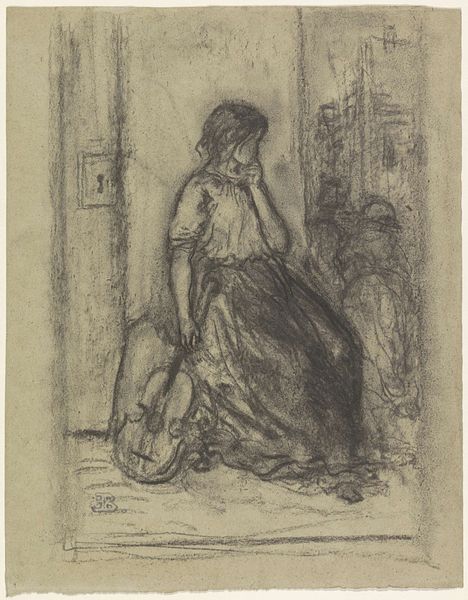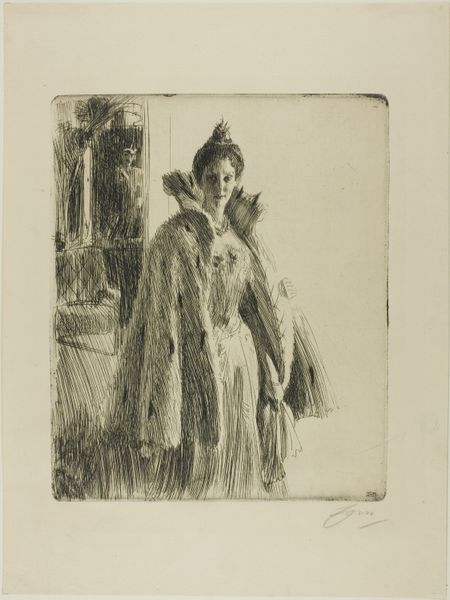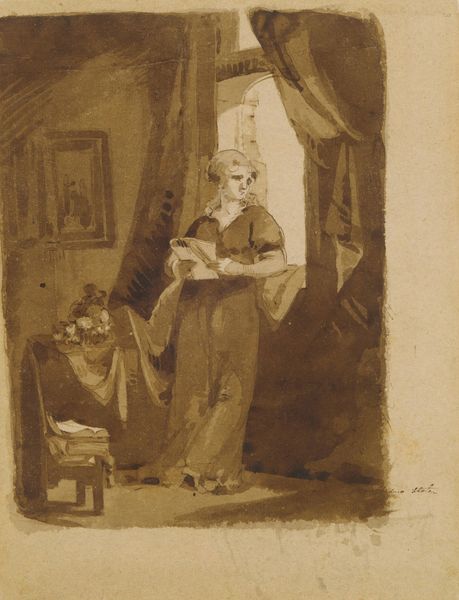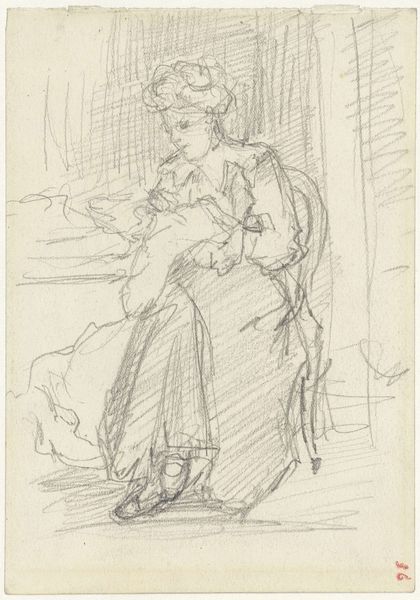
Dimensions: 225 × 151 mm (image); 234 × 158 mm (plate); 312 × 253 mm (sheet)
Copyright: Public Domain
Editor: So, here we have Anders Zorn's etching, "Morning," created in 1891. The impressionistic style captures a figure bathed in light. It feels both intimate and a little melancholy to me. What stands out to you about this work? Curator: What immediately captures my attention is how Zorn uses the image of "Morning" as a signifier, pregnant with associations. In many cultures, morning symbolizes birth, beginnings, and purity. How do those connotations interplay, do you think, with the figure presented to us? Editor: I suppose that there's a freshness to her…the way she is partially undressed and exposed. Curator: Exactly! The figure, presented so intimately, is perhaps meant to embody a certain vulnerability linked to the dawn of a new day. This relates to what Carl Jung termed the archetype of the "anima" - the inner feminine side, often linked to creativity and intuition. Do you see visual cues evoking such concepts in Zorn's handling of light and shadow? Editor: The light definitely softens her form, makes her seem almost…dreamlike? The dark lines of the etching simultaneously ground her, making her present in the space, while the curtains seem to trap light creating her intimate space. Curator: Indeed, the dichotomy could speak to the contradictory feelings associated with new beginnings: hope intertwined with trepidation, clarity mingled with the shadows of the unknown. It makes the figure both a personal study, and also a larger idea about the universal experience of facing the dawn, doesn’t it? Editor: It does. Thinking about those visual symbols, I see now that "Morning" represents something far beyond a simple scene. Curator: Precisely. Zorn's etching invites us to connect with deeper cultural understandings embedded within a single moment.
Comments
No comments
Be the first to comment and join the conversation on the ultimate creative platform.


